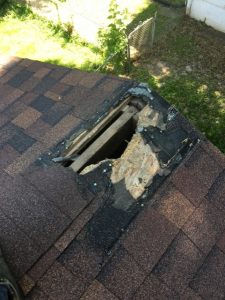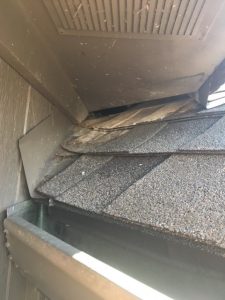Wildlife can take advantage of gaps, crevices, and holes to gain access to your house. Animals can squeeze through holes much smaller than their actual body. If you do a visual inspection around your house, keep in mind how small of a hole an animal can use. In some cases, you might not be able to see the animal entry point from the ground.
Use this helpful guide to identify potential entry points.

Where Do Animals Get into My House?
Animals are going to follow the path of least resistance. If they can find an easily accessible hole, they will take advantage of it. When they cannot find a hole the right size, they are strong enough and clever enough to make it bigger.
Some of the most common entry points in your home are as follows:
- Chimneys
- Roof Ridge Vents
- Roof Returns
- Soffits
- Fascia
- Dormers
- Gable Vents
- Stove Vent
- Bathroom Vent
- Range Vent
- Utility Penetrations
- Windows, Doors
An entry hole leaves your home vulnerable to a multitude of animals. Rats, mice, and bats can use holes created by larger animals, such as raccoons. Long-term wildlife control requires whole home exclusions.
Once wildlife has established themselves in your home, they will find other potential entry points. Just because an animal used your gable vents to get into your home, doesn’t mean they won’t try to break through a weakened soffit. Professional wildlife control will seal any current and potential entry points to your house.






